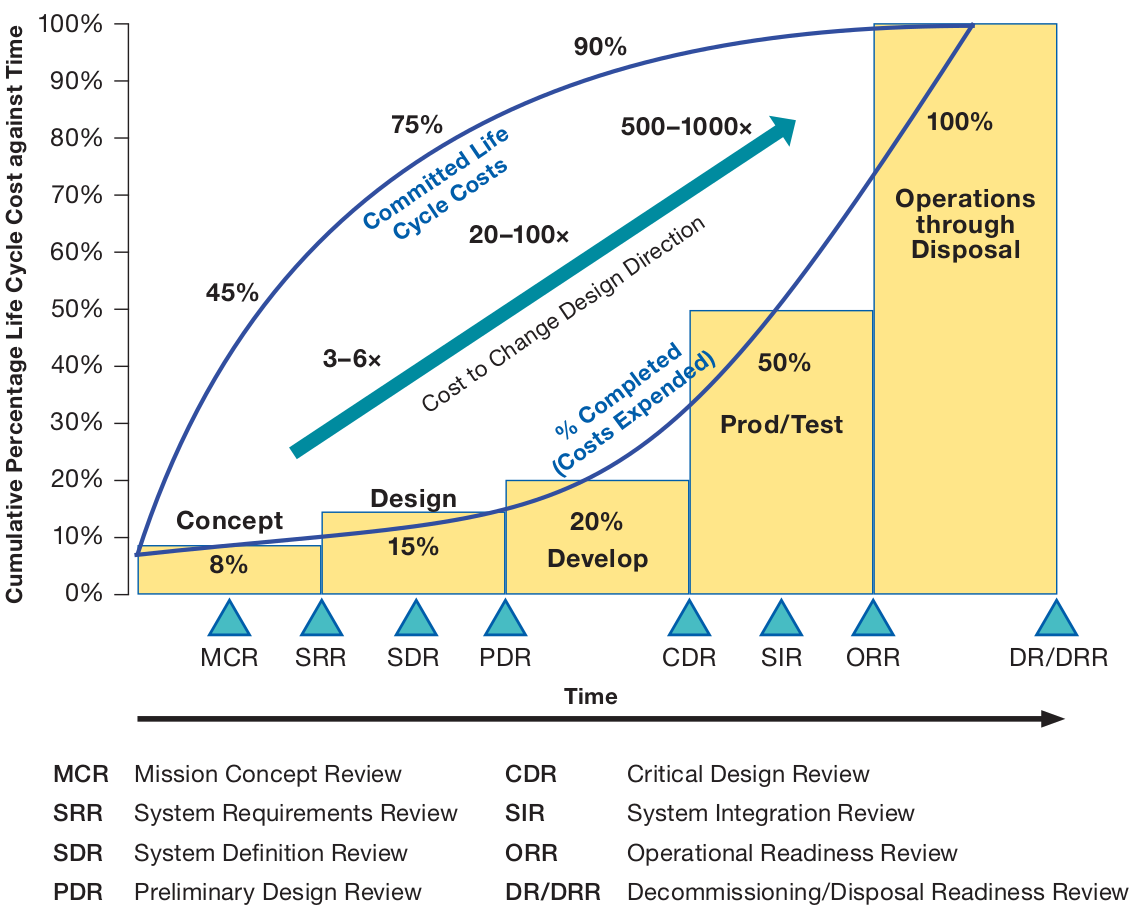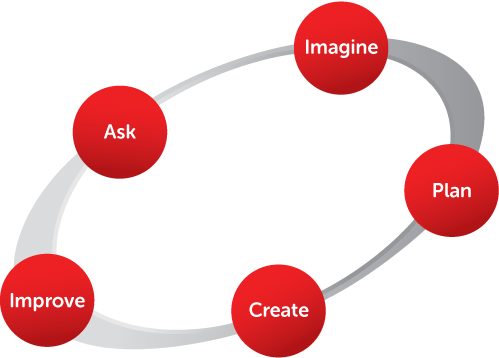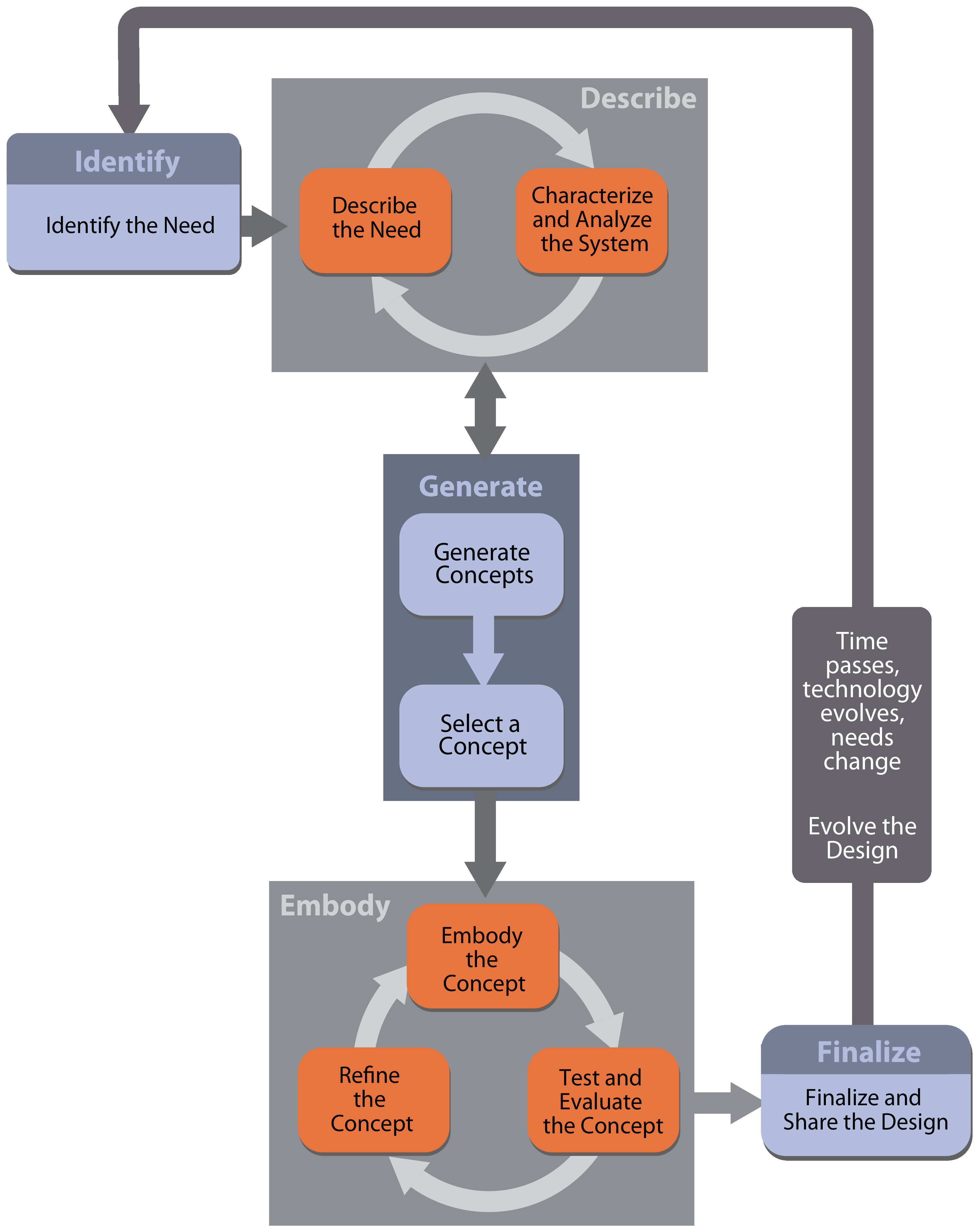1. Preparation
(This section is background information, reading, and tasks for your preparation for session 2)
Study the four figures below that describe different views of the engineering design process. The images link to the sources of the figures.
-
Draw your own diagram that maps the engineering design process.
-
What is the minimum number of “blocks” needed to capture the essence of the engineering design process? Provide some justification for this number.
-
-
How do you know when to move to the next step?
There are several formal processes that organizations follow. This is usually described under the term Systems Engineering, which focuses on the larger scale organization of an entire project or system. See NASA Systems Engineering Handbook for one example document. One reason for documenting this is so that everyone can use a common language when describing what they are working on and how it fits into the larger goals.
1.2. EiE Engineering Design Process
-
Ask: What is the problem? How have others approached it? What are your constraints?
-
Imagine: What are some solutions? Brainstorm ideas. Choose the best one.
-
Plan: Draw a diagram. Make lists of materials you will need.
-
Create: Follow your plan and create something. Test it out!
-
Improve: What works? What doesn’t? What could work better? Modify your design to make it better. Test it out!
2. Class time
Check Blackboard for who is in your assigned project group.
Make sure you are not sitting next to these people!
2.1. Engineering Design Process
Pull out the engineering process diagram you drew for hw02 and share it with your neighbor.
-
Similarities
-
Differences
Next week:
-
More formal process
-
System Design Requirements

2.2. Project problem finding
-
Pair-up and share the three needs others have that you identified from
hw01. -
As a pair, come up with 2 more.
-
(each group shares their common theme or favorite)
Get together with your project group:
-
Share all of your collected ideas.
-
For
hw03:-
Propose 2 needs or problems that you’d like to work on for this semester.
-
Rest of details posted in Blackboard
-
4. Resources
-
NASA Systems Engineering Handbook
nasa_systems_engineering_handbook_0.pdf. -
Our World in Data https://ourworldindata.org/
-
NAE Grand Challenges for Engineering http://www.engineeringchallenges.org/challenges.aspx
-
UN Sustainable Development Goals https://sustainabledevelopment.un.org/sdgs



